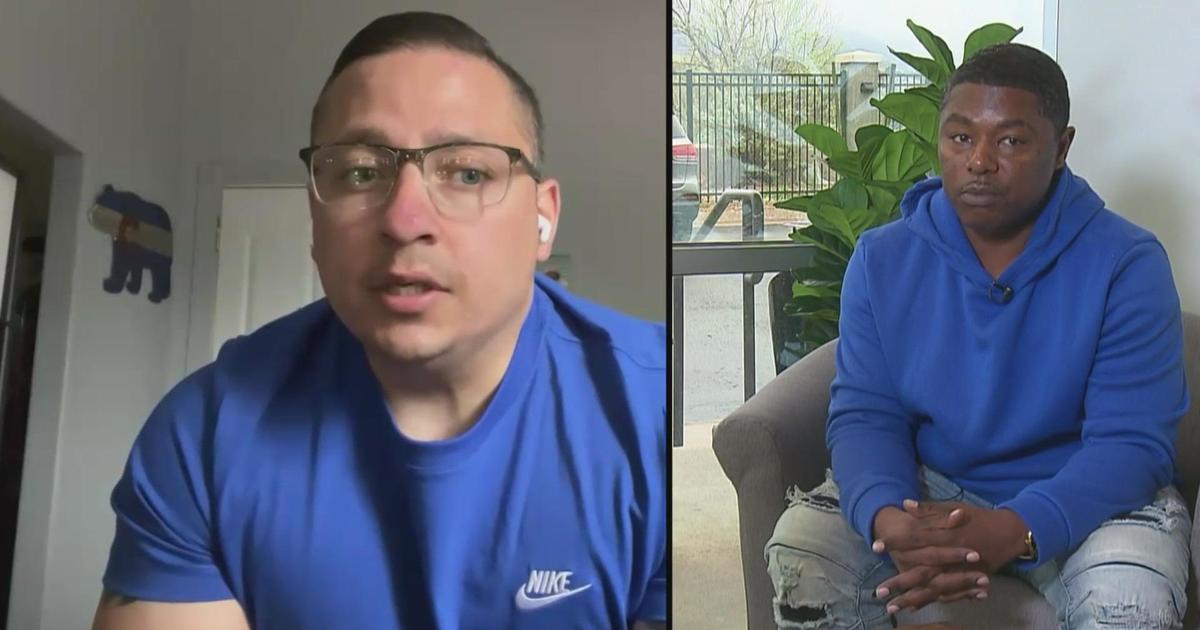Once-Prominent Sheriff Pat Sullivan Now Faces Charges
CENTENNIAL, Colo. (AP) — For years, Patrick Sullivan was the anti-drug crusader, the hero and the law enforcer who knew how to get what he wanted.
"Sheriff Pat Sullivan" would don his uniform, show up at the offices of elected officials in suburban Denver and hand them a report. He'd ask them to take a look, but he really meant support him, officials recalled.
Now, Sullivan, 68, is no longer the tough-talking lawman. He is the "old man" who a 911 caller asked police to remove from his home and the one accused of offering methamphetamine to a man in exchange for sex.
How he went from being voted the nation's sheriff a decade ago to getting bailed out of the jail that bears his name has perplexed many in affluent Arapahoe County, where he served for decades.
"It's just hard to imagine," said Lance Clem, a state public safety department spokesman who worked with him since the 1970s. "This does not make sense."
Sullivan, who is married with two grown children, has not entered a plea. His attorneys declined comment.
Investigators also are trying to answer, for example, whether he was involved with drugs while he was sheriff and what exactly he knows about a 27-year-old man he knew who was found dead in a freezing river this year in Denver.
The Havre, Mont.-born Sullivan began his law enforcement career in 1962, when he worked as a police dispatcher. Later, he was a chief Army counterintelligence agent and, in 1979, joined the sheriff's office.
He earned a reputation as an engaging, business-like law enforcer who recognized emerging trends, such as drunken driving in the 1970s, before politicians started passing laws, Clem recalled.
Sullivan was appointed sheriff of the then-690-member department in 1983 and earned commendations, including for the rescue of two wounded deputies in which he crashed an unmarked Jeep through a fence to protect them in a shootout.
"To have the sheriff in that scene himself; that does get into people's psyche," said John Brackney, a former county commissioner.
Sullivan seized the moment to reinforce his objection to "weapons of war" and held up a small semiautomatic weapon found at the scene, according to a March 24, 1989 report in The Gazette-Telegraph, now The Gazette (Colorado Springs). He wrote a nine-page paper that day outlining his opposition, the kind of document that he would drop on officials' desks.
"Every time you see Pat, he was sticking a piece of paper in your hand for some need," Brackney said, "... he was always advocating for this or that."
In the late 1990s, Sullivan tussled with Steve Ward, then a county commissioner, over a jail addition, Ward said. Ward thought it was costly, but said Sullivan wasn't the reason he changed his mind. Instead, he concluded the addition was necessary because of the county's increasing population.
"Pat got his jail and he was content," Ward said.
Sullivan, named top sheriff in 2001 by the National Sheriffs' Association, resigned in 2002 to become chief of security for Denver's Cherry Creek School District. Sullivan retired in 2008, and stayed out of the limelight until this year, when a 911 caller said on Sept. 20 that an "old man" was at his house and might have been trying to get three recovering addicts back on drugs.
The caller, Dillon Grilley, said he wanted the man out of his home. Grilley said the man, identified in court documents as Sullivan, flashed what appeared to be a law enforcement badge — an apparent attempt to intimidate.
"I knew who he was because he told me. I looked it up on the Internet," he said.
Grilley said he tried to kick them out, but Sullivan would block him. When Grilley threatened to call police, according to the incident report, Sullivan replied: "If you want the police, I am the police."
Sullivan denied the claims to investigators and told them he was at Grilley's home because he worked for a state drug rehabilitation program and was helping the men. A state health department spokesman said no such program exists.
Among the three men at Grilley's home was a 34-year-old, who was arrested for allegedly violating a protective order that Sullivan had taken out against him. Sullivan said he sought the order because the man was aggressive toward him while they worked on drug rehabilitation.
The next day, Sullivan persuaded a judge to drop the restraining order and showed up at the Patrick J. Sullivan Jr. Detention Center to demand the man's immediate release. The judge tossed the restraining order but didn't release the man.
"I'm the man this building is named after," Sullivan told a jail staff member shortly before storming off and telling deputies he'd search for an ATM for the $750 bail, according to a sheriff incident report.
Months later, Sullivan would end up having to post $50,000 bail to get out of the jail.
His arrest raised many questions, including why Denver police wanted to question him about Sean Moss, whose body was found on Jan. 26. Sullivan was a reference for Moss, who applied for a school district security job.
The coroner determined Moss drowned, but not why. An autopsy found methamphetamine in Moss' system and a rave drug known as "Liquid Ecstasy," which is also a date rape drug.
The Denver Post reported that Sullivan had posted bail for Moss 12 days earlier after Moss was arrested in a domestic violence case involving a fight with a man described in documents as Moss' boyfriend.
Investigators have declined to comment about why they wanted to question Sullivan about Moss. A judge has issued a gag order in Sullivan's case.
Meanwhile, county officials are looking at banning the naming of buildings, parks and streets after living people. "You never know what they've done until after they're dead," Ward said.
- By P. Solomon Banda, AP Writer
(© Copyright 2011 The Associated Press. All Rights Reserved. This material may not be published, broadcast, rewritten or redistributed.)



